Apistogramma sp. "Sanchez", another new species from Peru.
February 2025
This new species was discovered very recently:


It was first provisionally labelled Apistogramma cf. panduro. However, it was found far away from where A. panduro lives (on the opposite side of several huge rivers), and, although similarities, it shows clear morphological differences.
We have listed it in the A.-nijsseni-group (in the A.-trifasciata-lineage) in our species list.
xxxxxxxx
Apistogramma cf. sp. "D62"(2024), a new species from Colombia?
July 2024
In 2020, the original Apistogramma sp. "D62" was discovered and collected in Colombia:


In 2023, a quite similar (color-wise) species/form was discovered, but with a clear pattern in the caudal fin. We labelled that one
A. cf. sp. "D62"(2023).
This year, another similar fish was discovered, not quite at the same location as the original.
This new one also has a prominent pattern in the caudal fin, in addition to different colors in the dorsal fin from the other two forms.
We suspect it is a different species than the original A. sp. "D62", and we label it Apistogramma cf. sp. "D62"(2024):


xxxxxxxx
Apistogramma sp. "Manguari", another new species from Brazil.
July 2024
When the Río Caquetá flows into Brazil, from Colombia, it changes its name to Rio Japurá.
In the drainage of this river, this new species was discovered very recently.


We have listed the Apistogramma sp. "Manguari" in the A.-barlowi-complex (in the A.-atahualpa-group) in our species list.
Thank you for your photos and information, Señor Ausber!
xxxxxxxx
We finally found the Apistogramma cf. sp. "Mitu"(Redbelly)!
June 2024
In our article [Long time ago! – Apistogramma sp. "Mitu" back in Europe after 26 years] we presented a fish of which only three specimens were exported from Colombia to Japan in 2015, and which subsequently disappeared from the hobby,
the
Apistogramma cf. sp. "Mitu"(Redbelly).
In 2018 we found the fisherman who collected the three specimens in 2015, and he agreed to show us where he had found them. We went there with him, but after thoroughly searching the area, we had to realize with great disappointment that the species was no longer there.
Now, 6 years later, we have finally found it, far away from where the three specimens were collected in 2015!
But because the new ones were found in a completely different place to the three specimens found in 2015, we cannot be 100% sure that this is the same species, and we therefore give the new one the preliminary name
Apistogramma cf. sp. "Mitu" (Redbelly -2024).
Hopefully we will be able to reproduce it, this time. And it looks promising here!




xxxxxxxx
Apistogramma sp. "Japura", another new species from Brazil.
May 2024
This new species was discovered earlier this month, in the Rio Japurá drainage in Brazil.
Rio Japurá is the name the Río Caquetá gets when it flows into Brazil, from Colombia.


Based on the few existing photographs of this new species, we have not been able to link it to any taxonomic groups. In our species list it is therefore, for now, listed in the group "Affiliation Uncertain".
Thank you for photos and information, Señor Ausber!
xxxxxxxx
Apistogramma sp. "Tonantis", a new species from Brazil.
April 2024
This is a new A. regani-complex fish.
It was found in the Tonantis area, Amazonas, Brazil.
With it's similarities with A. paulmuelleri, we will list it as A. cf. paulmuelleri (Tonantis).
Thank you again Señor Ausber, for the permission to publish your discoveries!
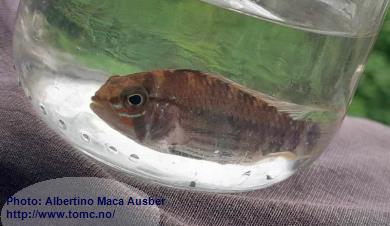
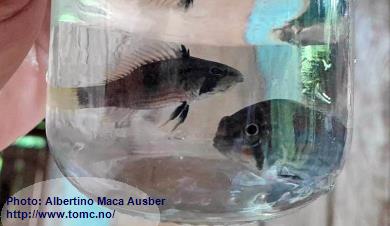
xxxxxxxx
Apistogramma sp. "Ipiranga", another new species from Brazil.
April 2024
This beautiful new A. barlowi-complex fish was discovered earlier this year, in the drainage of the Brazilian part of the Rio Putumayo.
Thank you Señor Ausber, for showing us your novelties!
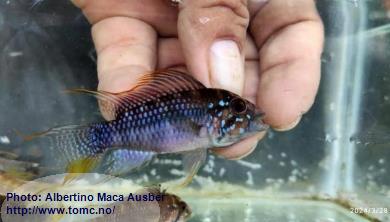
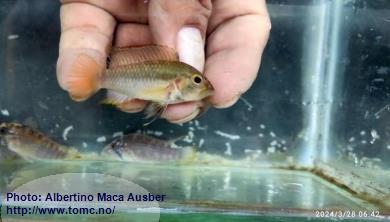
xxxxxxxx
Apistogramma sp. "Macusari", a new species from Peru.
November 2023
This new A. nijsseni-group fish was discovered earlier this year.
It was found in the Río Tigre drainage, Peru.
Thank you Señor Ausber, for the permission to publish your photos here!
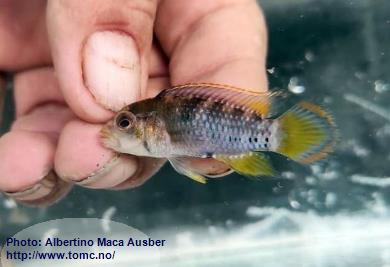
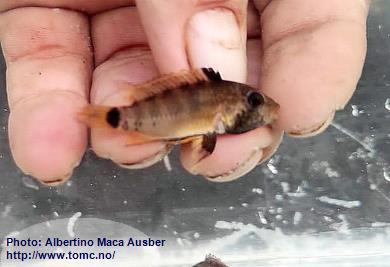
xxxxxxxx
Apistogramma salpinction has been collected.
November 2023
For the first time ever we are able to publish photos of live specimens of this species.
(We published photos of an A. cf. salpinction in 2011, but that was a different species).
In October this year, René Grossklaus and friends collected the true Apistogramma salpinction, at the type locality, in the Rio Trombetas drainage, Pará State, Brazil.
Thank you René, for giving permission to publish your photos of the newly collected specimens here!
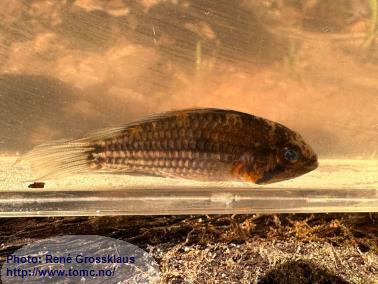
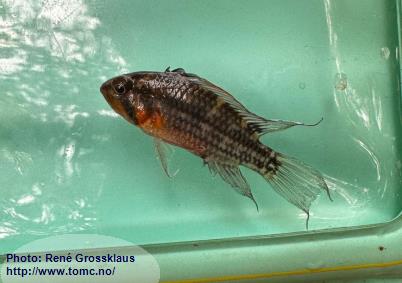
xxxxxxxx
Apistogramma sp. "D33" has been re-collected.
June 2023
We discovered the Apistogramma sp. "D33" for the first time in January 2017. This colorful and interesting species has now been collected again, in March/April this year.
A few specimens were shipped to China, and there Vince Pao photographed them, which resulted in some amazing photos
of this species.
Thank you very much, Mr. Pao, for giving me permission to publish some of your wonderful photos here!
Males:
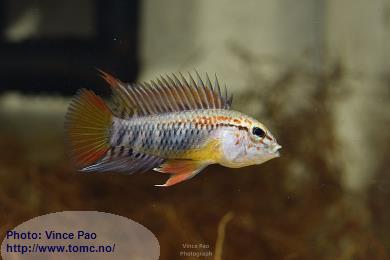
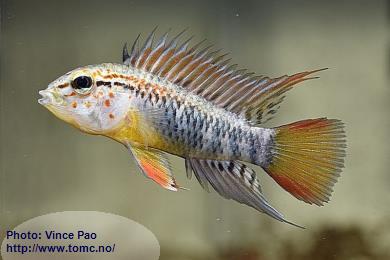
Females:
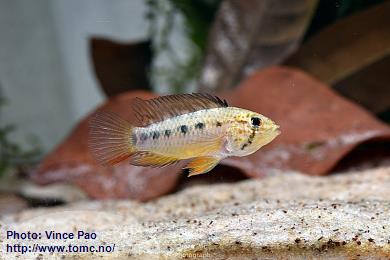
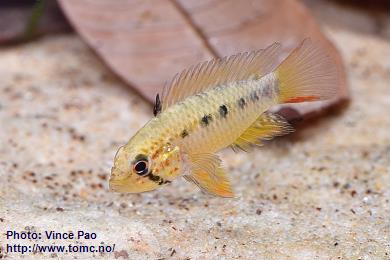
xxxxxxxx
Apistogramma sp. "Z16" from Colombia
June 2023
Another new species from Colombia recently ended up in Japan. Akihiro Shimizu gave it the provisional name A. sp. "Z16", and kindly gave us permission to publish his photos here. Thank you, Mr. Shimizu!
Two males and a female:
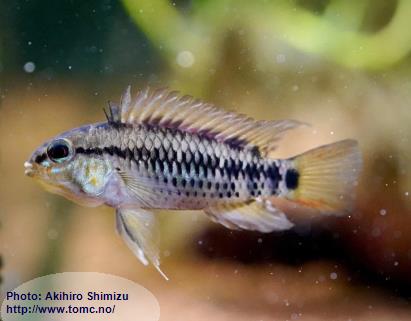
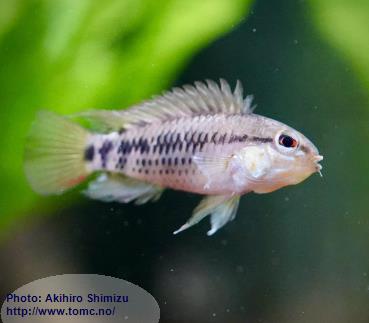

These are said to have been collected in the Río Orinoco drainage.
xxxxxxxx
Apistogramma sp. "D65" has been discovered!
February 2023
A supposed new Apistogramma-species was discovered a few days ago. It was found by Daniel Mejia-Vargas and Ernst van Genne et al. in the Río Caquetá drainage (Colombia).
The fishes will soon arrive in a less stressful environment than a plastic bag, and hopefully they will then show more of their black markings. We will then be back with more photos, and also some taxonomic considerations.
Supposed male and female:
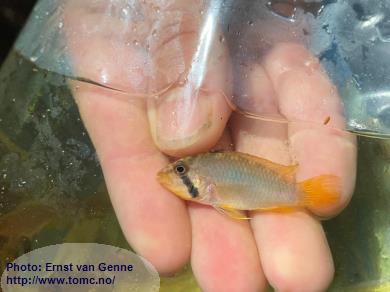
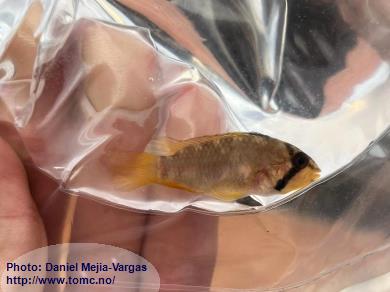
xxxxxxxx
Apistogramma flavipedunculata is finally in the hobby!
February 2023
We have for the first time photos of live specimens of this exciting species. The fish has very recently arrived in Japan, and Akihiro Shimizu has kindly given us permission to publish his wonderful photos.
Male:
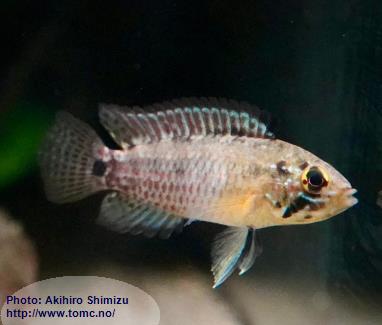
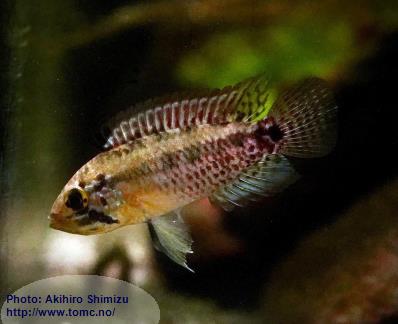
Male and female:
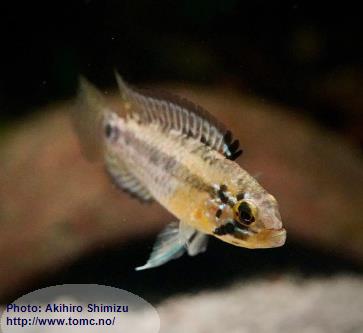
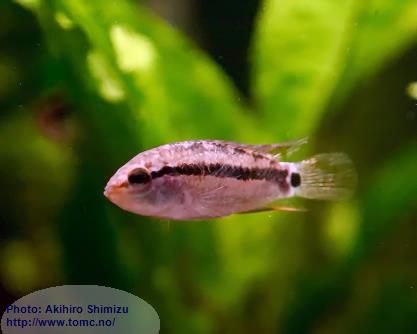
Here you may read the scientific description of this species, from 2016
xxxxxxxx
Apistogramma cf. eunotus (Puerto Nariño), Colombia
February 2023
Those of you who who know Koslowski, 2002: "Die Buntbarsche Amerikas. Band 2: Apistogramma & Co.", may have read in the chapter about Apistogramma sp. "Red-spot/Rotpunkt" (Aquarium Form) (A 106) (Now A. cf. alacrina):
"... Fish entirely identical to this form have been distributed as A. sp. "Puerto Narino" (Glaser & Glaser 1996). The collecting locality data given by Warzel (a Colombian town on the Amazon) is not certain." (translation by Mike Wise).
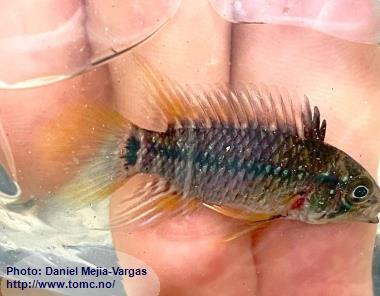
In an attempt to confirm or deny the existence of an
A. cf. alacrina form near Puerto Nariño on the Amazon River, Apistogramma was recently searched for in this area.
Only one Apistogramma species was found, we call it
A. cf. eunotus (Puerto Nariño):
This is definitely no A. cf. alacrina form, so the mystery lives on: What kind of fish did Warzel find at Puero Nariño, which he believed was an A. cf. alacrina?
xxxxxxxx
Apistogramma sp. "D63" and "D64" from Colombia
January 2023
In a very remote area, which has never been explored for Apistogramma, two different Apistogramma-species were recently found.
A. sp. "D63"
Males:
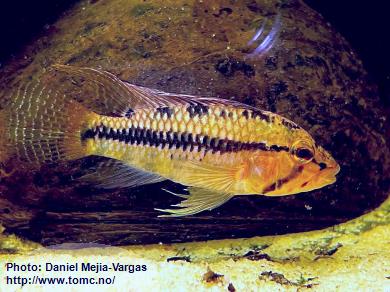
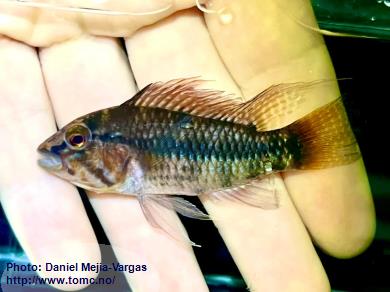
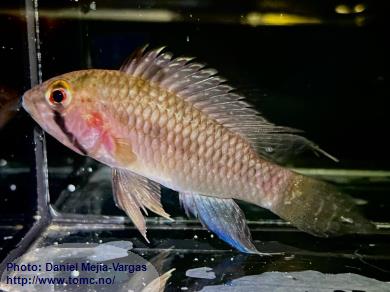
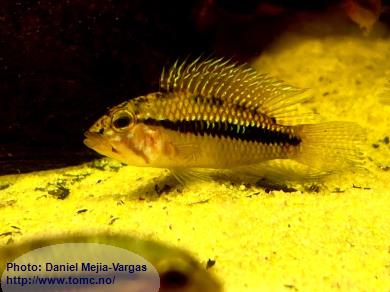
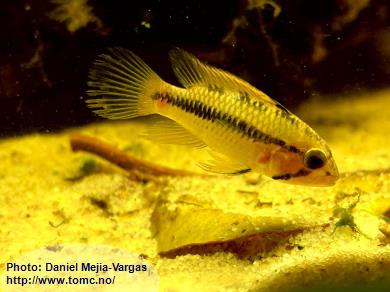
and a female:
A. sp. "D64"
Male:
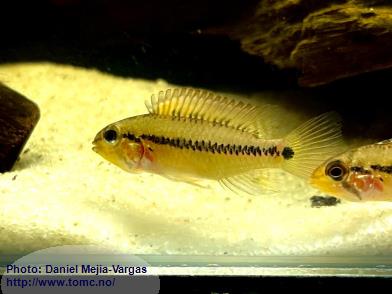
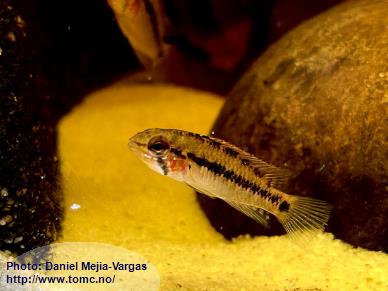
Female:
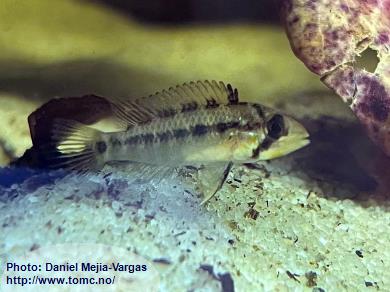
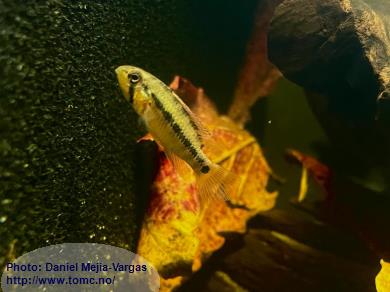
Interesting fishes!
However: The A. sp. "D63" closely resembles the well known A. sp. "D10", and the A. sp. "D64" is very similar to the beautiful A. sp. "D6"/"Mitú"!
The new ones were collected between 100 - 200 km away from, and in different drainages than the known habitats of the
A. sp. "D10" and the A. sp. "D6"/"Mitú". Are they new species or just representing new locations of the two known species? We don't know. Hopefully, future DNA analyzes will give us some answers.
xxxxxxxx